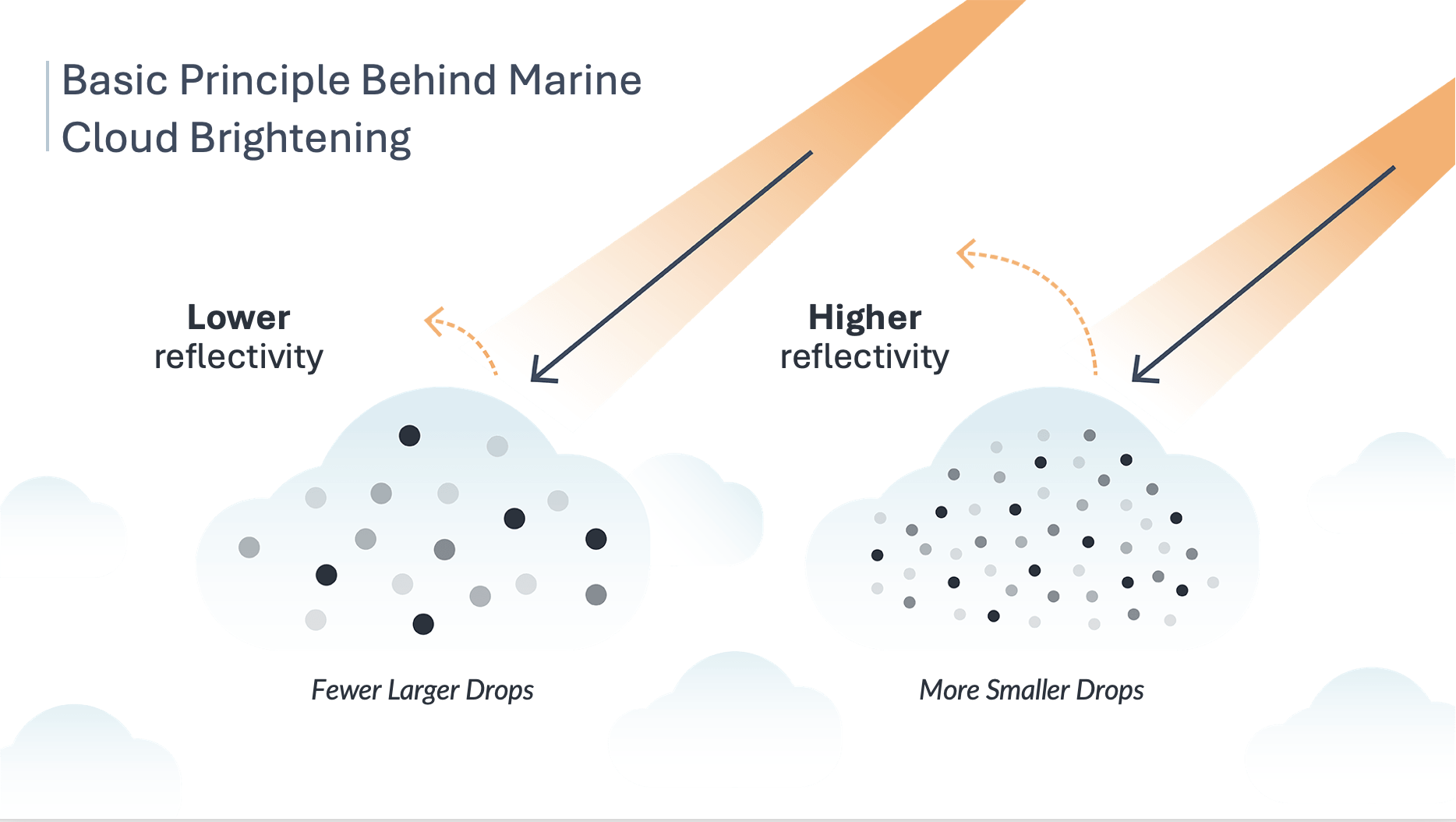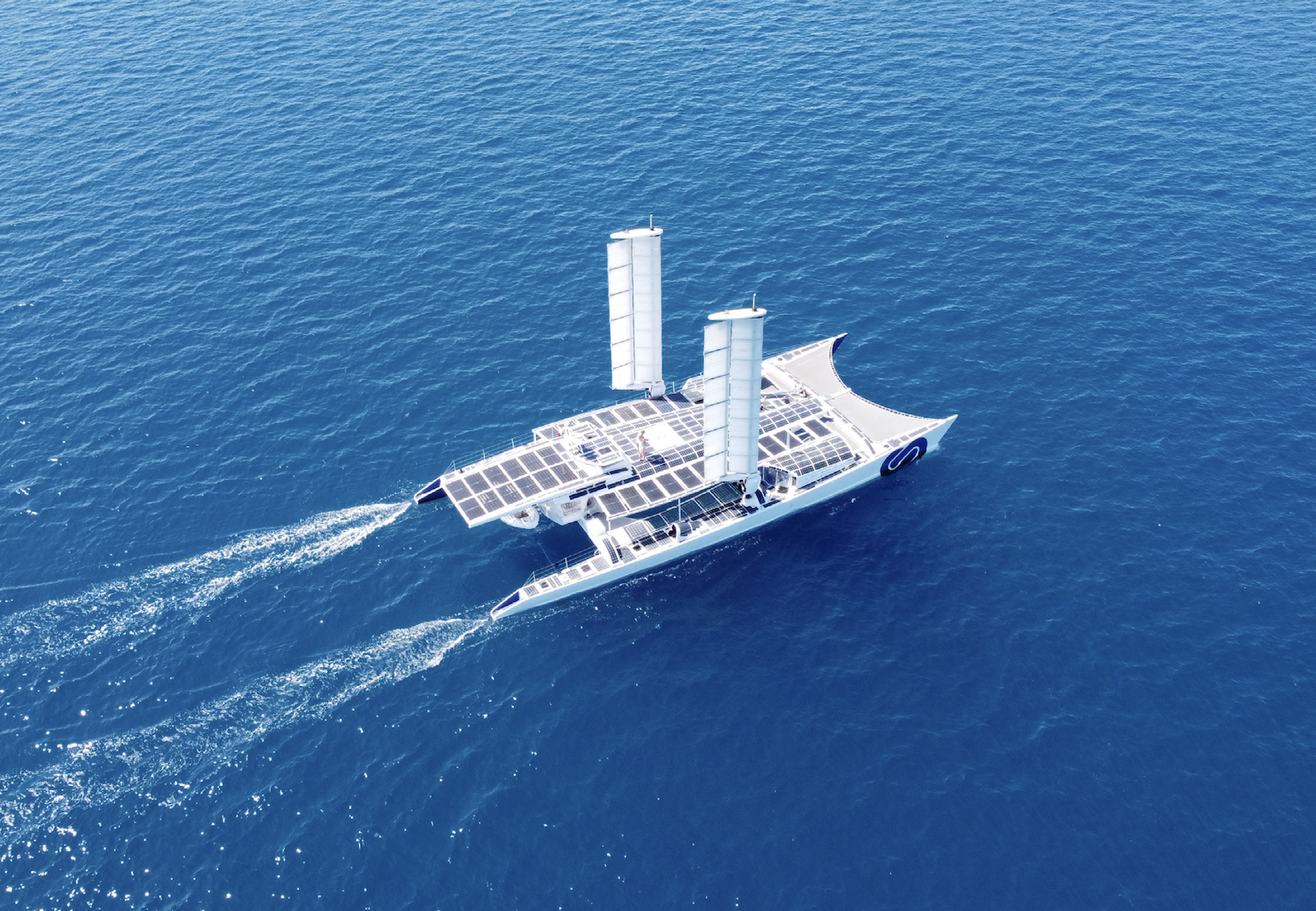
(Image credit: Spencer Watson/Unsplash)
As global temperatures continue to rise, the search for solutions to mitigate the effects of climate change intensifies. Among the various options, solar radiation modification, also referred to as solar geoengineering, is gaining traction as a potential method to temporarily reduce global temperatures. This technique, which involves reflecting the sun’s energy back into space, is increasingly viewed as a temporary way to cool the Earth until greenhouse gas emissions can be sufficiently reduced by lessening our reliance on fossil fuels.
A considered approach to cooling our planet
Historically, the idea of modifying solar radiation through techniques like injecting aerosols into the stratosphere, cirrus cloud thinning, space-based techniques and stratospheric aerosol scattering was met with skepticism due to the potential for unintended consequences. Accordingly, a less radical method known as marine cloud brightening presents a promising alternative.
This technique uses a machine attached to a boat to disperse sea salt into the air above the ocean surface, increasing the clouds' reflectivity and decreasing the amount of solar radiation they absorb. Originally conceptualized in the 1990s by British physicist John Latham, marine cloud brightening has significantly evolved to incorporate precise control over the dispersion of sea salt using advanced technology.
While marine cloud brightening has been studied in computer models and is beginning to be field tested by the University of Washington and other groups, scale is a corollary challenge that must be addressed. The difficulty lies in how to achieve broad coverage over vast areas without simultaneously consuming large amounts of fuel, which would reduce, if not entirely negate, the intervention’s benefit.
One innovative solution involves the use of autonomous solar-powered catamarans. These vessels will be equipped with expansive solar arrays integrated into their dual-hulled structures, maximizing energy capture for propulsion and operation of aerosol dispersion appliances. This design ensures continuous, emissions-free operation.
Deploying these catamarans near the equator, where sunlight is most intense, could significantly enhance the cooling effect globally. By autonomously navigating predetermined routes, these catamarans can cover vast ocean areas, continuously deploying aerosols without human intervention and providing a significant advancement in the scalability and effectiveness of solar geoengineering efforts.

Reevaluating radical solutions: Challenges and limitations
Despite the promising advancements in marine cloud brightening technology, a number of questions remain regarding its long-term impact on weather patterns and marine ecosystems. Ethical questions about the governance of such geoengineering efforts, as well as the long-term climatic consequences, also persist. Moreover, scaling this technology to a level that could meaningfully impact global temperatures presents significant logistical and financial challenges.
Nevertheless, the increasing interest in geoengineering solutions as global temperature levels rise is underscored by a shift in perspective among some prominent environmental groups. The Environmental Defense Fund is among those planning to finance research into solar geoengineering technologies like marine cloud brightening, The New York Times reports.
This is notable because the Environmental Defense Fund has traditionally been skeptical about such interventions. However, as the organization's associate chief scientist Dr. Lisa Dilling told the Times, the urgency of the climate crisis makes it imperative to explore all possible methods, including those that may have been previously dismissed. The Environmental Defense Fund's research aims to answer critical questions about the broader impact of these interventions, such as the effect on precipitation patterns and ocean currents.

The power of collaboration
Inspiration for the autonomous catamarans comes in part from the Energy Observer, a 100-foot catamaran launched in 2017 as the first hydrogen-powered vessel to demonstrate the viability of using renewable energy in maritime applications. Through the integration of solar arrays, the use of seawater to produce hydrogen, and hydrogen fuel cells and advanced navigation systems, the project offers practical insights into building efficient, sustainable catamarans capable of long-term, autonomous, carbon-free operations to enhance marine cloud brightening efforts effectively to combat global warming.
Preliminary estimates suggest these solar-powered catamarans can significantly increase the area covered by marine cloud brightening interventions, potentially amplifying their cooling effect on the planet. These autonomous vessels, guided by advanced navigation systems to calculate the most effective dispersion routes based on real-time climatic data and oceanographic conditions, can operate continuously, minimizing human labor and operational costs. Their ability to be directed toward areas with the highest sunlight exposure will maximize energy generation for propulsion and aerosol dispersion, and optimize the intervention’s effectiveness.
While they aid in cooling the oceans and reducing the heat absorbed at the surface, the catamarans will also gather critical data that can help inform more robust climate models and future geoengineering initiatives. This dual functionality — and the ability to target the intervention in specific regions such as along the equator, where natural ocean currents can distribute the cooling effect — underscores the potential of integrating this technological innovation with environmental conservation and decarbonization strategies to address the complex challenges posed by global warming.
Engaging the world in climate action
This initiative is a call to action for global cooperation by academic, for-profit and nonprofit groups in supporting innovative climate change solutions. As these autonomous solar-powered catamarans navigate the oceans, they could embody hope for a cooler, more sustainable future.
Further research and development are necessary to refine marine cloud brightening and the autonomous catamaran technology to deploy it. Pilot projects are crucial for testing and validating real-world effectiveness and environmental impact. Such endeavors will provide the foundational knowledge needed for broader implementation, potentially revolutionizing our approach to mitigating global warming.
(Homepage image: Shifaaz shamoon/Unsplash)

Rinaldo, founding president and CEO of the World Business Academy, is a successful entrepreneur, executive, author, radio host and futurist. He has published numerous cutting-edge articles and books that address the role and responsibility of business in relation to the critical moral, environmental and social concerns of the day. He is a regular keynote speaker at conferences and guest lecturer at business schools such as Stanford Business School, the Columbia Graduate School of Business, the Kellogg Graduate Business School at Northwestern University and the Keenan-Flagler Graduate School of Business at North Carolina University. For over 35 years, Rinaldo has been widely recognized as a practical visionary and change agent.














